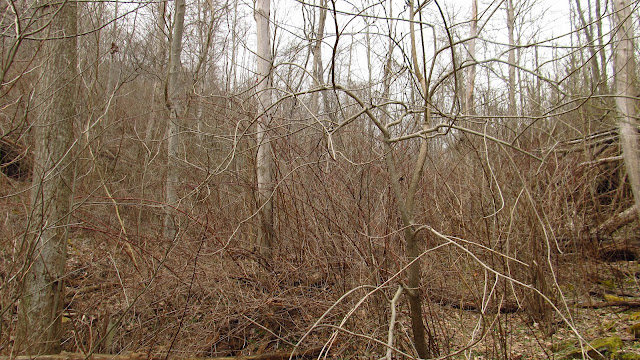This is a tunnel I just happened to stumble across while driving through the south hills of Pittsburgh. Right along the side of Bower Hill Road near the intersection with Painters Run Road sat this tunnel:
 |
The west portal of the Essen Tunnel |
It looked a little small for a railroad tunnel but a lot of is buried. It's much larger when you get up close to it. I located the tunnel on the USGS 1904 Carnegie quadrangle map and sure enough it was a railroad tunnel.
 |
The tunnel circled on the 1904 USGS map. |
This tunnel dates back to 1881-82 and this section of the railroad, Junction 2, from Woodville to Essen was opened on January 1, 1883. Eventually it made it to Beadling and was known as the Beadling Branch. It served the coal mines at Essen and Beadling until it was dismantled during WWII to use for scrap metal to feed the war effort.
 |
An abutment remains from what would have been a bridge carrying the railroad over Painters Run. |
 |
A close up of the stone and brick work. |
After this I went looking for the east portal. It was pretty easy to find but not very easy to get to. It sits on the hillside behind a pizza shop along Painters Run Road. Between the tunnel and the pizza shop is Painters Run. I got a photo from behind the pizza shop and that's what I'm using. Maybe someday I'll get over there. Today I was working and not dressed for creek fording.
 |
The east portal. |
What's interesting about this is the sign that sits in front of it. The sign reads "Caution Mine Opening".
 |
Zoomed in on the previous photo. |


















































































































